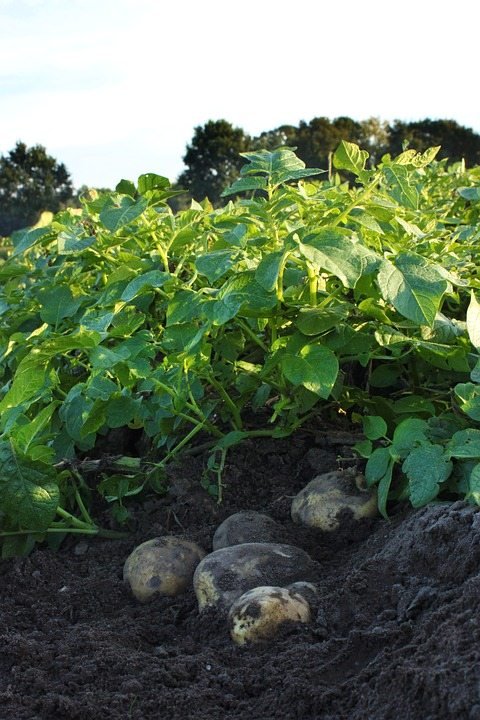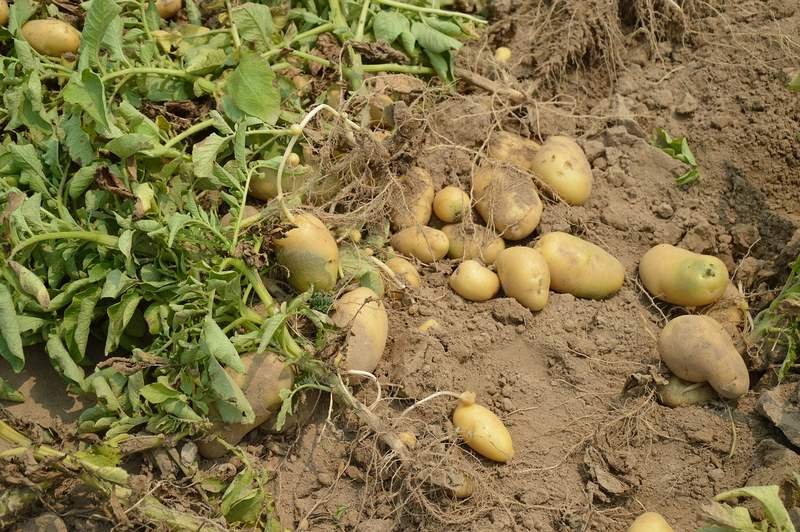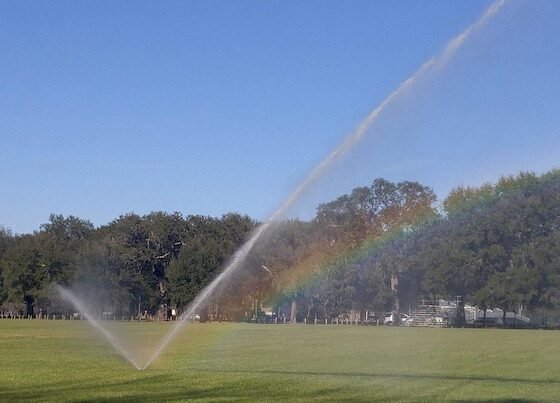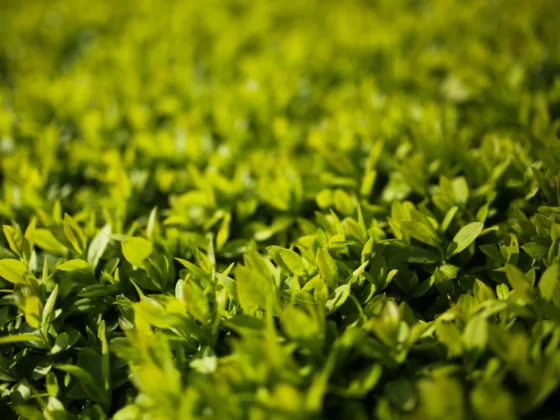Table of Contents Show
Not only are potatoes the fourth most important food crop in the world, but they are also considered the leading vegetable crop in the United States.
Potatoes are grown commercially in 30 US states, with the leading producers being Idaho, Washington, Wisconsin, Colorado, and North Dakota.

Helpful Tips for Better Potato Farming
As per the Agricultural Marketing Resource Center‘s statistics for 2016, the United States’ cumulative exports of potatoes and potato products reached a total value of as much as $3.1 billion—with $568 million alone as profit for 1.5 billion pounds of exported frozen fries.
And according to the US Department of Agriculture’s National Agricultural Statistics Service’s (NASS) 2017 survey, nearly 60 percent of potato sales are to processors of French fries, chips, dehydrated potatoes, and other potato products, with the remainder allotted to the fresh market, farm animal feed, or seed tubers that are reused to grow the next season’s crop.
Indeed, this highlights the humble potato’s versatility and profitability, and the wide-scale of growth that the potato industry demands.
The main challenge of modern agriculture, then, is to ensure growing practices for top-quality, commercially viable potato crops, especially through the factors of water management and irrigation.
Here’s a brief discussion on how field conditions affect the quality and value of potato crops for commercial production, and four additional tips for lucrative potato farming.
A Bird’s Eye View of Issues in Potato Farming
Much focus should be afforded to the issue of water management in potato farming. As cited in the Potato Association of America’s Handbook, conditions unique to the potato crop such as knobby tubers, growth cracks, internal necrosis, black spot, hollow heart, heat sprouting, seed piece decay, Rhizoctonia stem canker, tuber late blight, and others—all relate to the amount of water distributed during the growing season, whether it be in lack of, excess of, or in general, due to poor distribution management.

Also to be considered are the proper applications of sprinkler irrigation, furrow irrigation, drip irrigation or sub-irrigation scheduling, and irrigation amount (“Water Requirements and Irrigation,” Commercial Potato Production in North America, The Potato Association of America Handbook).
Thus, many factors in water management, in particular, affect the commercial viability of potato crops. For example, water stress could cause discoloration in some portions of the crop sold for French fries, which lowers the quality, as well as the selling price, to processors.
Thankfully, technology is currently available toward detecting any early damage caused by water problems. Among these is aerial spectral imaging for potato farming, in which thermal imagery of the potato crops can expose coloration problems caused by watering stress, and also pinpoint the source of the trouble to sprinkler system problems or other issues in irrigation.
One farm in Central North Dakota, for example, identified plugged sprinkle nozzles, plugged pipes, and overwatering issues experienced by their pivot irrigation system simply by employing thermal imagery in the early stages of crop development.
Tips for Lucrative Potato Farming: 4 Key Factors
In addition to issues such as water management and irrigation, what are other key elements do farmers need to focus on in order to keep up a hardy potato crop? Here are a few to take into consideration:

1. Ensure the Fertility of Your Soil
One investment to make is for the overall nutrient content and fertility of the soil where the potatoes will be grown.
Potatoes thrive with their key macronutrient intake of nitrogen (N), phosphorus (P), and potassium (K), and it is recommended to enact a soil test to measure any deficiencies in these nutrients.
Moreover, it is both a profitable and sustainable move to invest in cover crops, as they will enrich the soil’s organic matter and fend off weeds.
2. Pick the Right Varieties
No two potato varieties will grow the same way in one field; it is important to select the right varieties and measure the maturity, yield, and disease resistance of those types against the farm’s soil, market, and vulnerability to certain pests or diseases. A farmer will need to choose accordingly and anticipate the successes, as well as the problems, of different potato crop varieties.
3. Prioritize Irrigation
As emphasized in the example above, irrigation factors very much into the health of the crop they must not suffer stress because of their watering situation.
Pay attention to the phases of tuber initiation and development, or around 30 days after planting.
With the right irrigation strategy, you can ensure good size and yield for your crop, and avoid problems such as discoloration and scarring.
4. Invest in the Right Equipment
Lastly, it would do well to research and invest in other technologies that are tailored to potato farming in particular.
These include mechanical chillers, sprayers against threats like potato leafhopper or blight, potato diggers, and the like. Look for equipment that is up to the scale and commercial needs of your farm.
Ultimately, potatoes are a crop whose popularity stands unwavering, and whose enterprise potential is quite high.
With the right approach that favors both sustained quantity and quality, the potato industry can attract more consumers around the world, and lead American farmers to higher heights with every year that passes.









